Saint Thomas More
தூய தாமஸ் மூர் (ஜூன் 22)
நிகழ்வு
இங்கிலாந்து மன்னன் எட்டாம் ஹென்றியின் தவற்றைச் சுட்டிக்காட்டியதால் மரண தண்டனை விதிக்கப்பட்ட தாமஸ் மூர் கொல்லப்படுவதற்காக தூக்குமேடைக்கு கொண்டுவரப்பட்டார். அவ்வாறு அவர் கொண்டு வரப்பட்டபோது அவருடைய நீண்ட தாடி வருகின்ற வழியில் இருந்த மரக்கிளைக்குள் மாட்டிக்கொண்டு அவருக்கு பெருத்த வலியைத் தந்தது. அப்போது அவர் தன்னை இழுத்து வந்த அதிகாரியைப் பார்த்து, “நான் தண்டிக்கப்படுவது சரி, எதற்காக என் தாடியும் தண்டிக்கப்பட வேண்டும்?” என்றார். அவர் இவ்வாறு பேசியதைக் கேட்ட அந்த சிறை அதிகாரி சிரித்தே விட்டார். அதன்பிறகு அந்த சிறை அதிகாரிக்கு தாமஸ் மூர் மீது இரக்கம்வந்தது. இருந்தாலும் மன்னரின் கட்டளை என்பதால் அவருக்குத் தூக்குத் தண்டைனையை நிறைவேற்றினார். தாமஸ் மூர் தன்னுடைய சாவை இன்முகத்தோடு ஏற்றுக்கொண்டார்.
வாழ்க்கை வரலாறு
தாமஸ் மூர் 1477 ஆம் ஆண்டு யோவான் மூர், ஆக்னஸ் என்ற தம்பதியினருக்கு மகனாகப் பிறந்தார். இவருக்கு எலிசபெத் என்னும் சகோதரி ஒருவர் இருந்தார்.
தாமஸ் மோரின் தந்தை யோவான் மூர் லண்டனில் நீதிபதியாகப் பணியாற்றி வந்தார். எனவே அவர் தன்னுடைய மகனை ஒரு வழக்குரைஞராக உருவாக்கவேண்டும் என்று கனவு கண்டார்.. பின்னாட்களில் தாமஸ் மூர் நல்ல முறையில் கல்வி கற்று, வழக்குரைஞராக மாறி தந்தையின் கனவை நனவாக்கினர். தாமஸ் மூர் ஒரு வழக்குரைஞராக விளங்கியதோடு மட்டுமல்லாமல் தத்துவவியலாளர், எழுத்தாளர், ஆலோசகர் போன்ற பல்வேறு தனித்தன்மைகளைப் பெற்றிருந்தார். 1516 ஆம் ஆண்டு இவர் எழுதிய ‘உட்டோபியா’ என்னும் புத்தகம் ஒரு நாடு அல்லது ஒரு சமூக அமைப்பு எப்படி இருக்கவேண்டும் என்பதைப் பற்றிப் பேசியதால் அது பலருடைய பலருடைய கவனத்தைப் பெற்றது. இதற்கிடையில் தாமஸ் மூர் பாராளுமன்றத் தேர்தலில் போட்டியிட்டு வெற்றிபெற்று இங்கிலாந்து நாட்டின் மன்னர் எட்டாம் ஹென்றியின் அமைச்சரவையில் நிதியமைச்சராக செயல்பட்டார். இவர் நிதியமைச்சராக செயல்பட்ட காலத்தில் ஒரு அரசியல் தலைவர் எப்படி இருக்கவேண்டும் என்பதற்கு மிகச் சிறந்த முன்மாதிரியாக விளங்கினார். அதனால்தான் 2000 ஆம் ஆண்டு அப்போது திருத்தந்தையாக இருந்த இரண்டாம் யோவான் பவுல் இவரை அரசியல் தலைவர்களுக்கு எல்லாம் முன்மாதிரி என்று குறிப்பிட்டார்.
இப்படி எல்லாம் நன்றாகப் போய்க்கொண்டிருந்த நேரத்தில் மன்னன் எட்டாம் ஹென்றி, தன்னுடைய மனைவி கேத்ரின் என்பவரை தனக்கு ஆண் வாரிசு கொடுக்காததினால், விலக்கிவிட்டு ஆன்பொலின் என்னும் பெண்ணை மணந்தான். இதனை தாமஸ் மூர் கடுமையாக எதிர்த்தார். ஆனால் மன்னனோ, “நான் இங்கிலாந்து நாட்டின் அரசன். எனவே நான்தான் இங்குள்ள திருச்சபைக்குத் தலைவன். என்னுடைய இந்த முடிவுக்கு நீ ஆதரவு தரவில்லை என்றால், உன்னைச் சிறையில் அடைத்து சித்ரவதை செய்வேன்” என்றான். தாமஸ் மூர் அதற்கெல்லாம் பயப்படாமல் தன்னுடைய கொள்கையில் – விசுவாசத்தில் - மிக உறுதியாக நின்றார். இதனால் சினங்கொண்ட அரசன் அவரைப் பல மாதங்கள் சிறையில் வைத்து பட்டினி போட்டு, இறுதியில் கொடூரமாகக் கொலை செய்தான். தாமஸ் மூர் கொல்லப்பட்ட ஆண்டு 1535 ஆம் ஆண்டு ஆகும். இவருக்கு 1888 ஆம் ஆண்டு அருளாளர் பட்டமும் 1935 ஆம் ஆண்டு புனிதர் பட்டமும் கொடுக்கப்பட்டது.
Also known as
omnium horarum homo (a man for all seasons, referring to his wide scholarship and knowledge)
Additional Memorial
1 December as one of the Martyrs of Oxford University
Profile
Studied at London and Oxford, England. Page for the Archbishop of Canterbury. Lawyer. Twice married, and a widower he was the father of one son and three daughters, and a devoted family man. Writer, most famously of the novel which coined the word Utopia. Translated with works of Lucian. Known during his own day for his scholarship and the depth of his knowledge. Friend of King Henry VIII. Lord Chancellor of England from 1529 to 1532, a position of political power second only to the king. Fought any form of heresy, especially the incursion of Protestantism into England. Opposed the king on the matter of royal divorce, and refused to swear the Oath of Supremacy which declared the king the head of the Church in England. Resigned the Chancellorship, and was imprisoned in the Tower of London. Martyred for his refusal to bend his religious beliefs to the king's political needs.
Born
7 February 1478 at London, England
Died
• beheaded on 6 July 1535 on Tower Hill, London, England
• body taken to Saint Peter ad Vincula, Tower of London, England
• his head was parboiled and then exposed on London Bridge for a month as a warning to other "traitors"; Margaret Roper bribed the man whose was supposed to throw it into the river to give it to her instead
• in 1824 a lead box was found in the Roper vault at Saint Dunstan's Church Canterbury, England; it contained a head presumed to be More's
Beatified
1886 by Pope Leo XIII
Canonized
1935 by Pope Pius XI
Saint John Fisher
புனிதர் ஜான் ஃபிஷர்
கர்தினால் மற்றும் ரோச்செஸ்டர் மறைமாவட்ட ஆயர்:
பிறப்பு: அக்டோபர் 19, 1469
பெவெர்லி, யோர்க்ஷயர், இங்கிலாந்து அரசு
இறப்பு: ஜூன் 22, 1535 (வயது 65)
டவர் ஹில், லண்டன், இங்கிலாந்து அரசு
ஏற்கும் சமயம்:
ரோமன் கத்தோலிக்க திருச்சபை
இங்கிலாந்து திருச்சபை
ஆங்கிலிக்கன் சமூகத்தின் சில பிற திருச்சபைகள்
முக்திபேறு பட்டம்: டிசம்பர் 29, 1886
திருத்தந்தை எட்டாம் லியோ
புனிதர் பட்டம்: மே 19, 1935
திருத்தந்தை பதினோராம் பயஸ்
பாதுகாவல்:
ரோச்செஸ்டர் மறைமாவட்டம்
நினைவுத் திருநாள்: ஜூன் 22
புனிதர் ஜான் ஃபிஷர், ஒரு ஆங்கிலேய கத்தோலிக்க ஆயரும் கர்தினாலும் இறையியலாளரும் மறைசாட்சியுமாவார். சிறந்த கல்வியாளருமான இவர், இறுதியில் “கேம்ப்ரிட்ஜ் பல்கலைகழகத்தின்” வேந்தருமாவார்
ஆங்கில சீர்திருத்த காலத்தில், “அரசன் எட்டாவது ஹென்றியை” இங்கிலாந்து திருச்சபையின் பிரதம தலைவராக ஏற்றுக்கொள்ள மறுத்த காரணத்தாலும், திருத்தந்தையின் மேலாதிக்கம் கொண்ட கத்தோலிக்க திருச்சபையின் கோட்பாடுகளை ஆதரித்ததாலும், அரசன் எட்டாம் ஹென்றியின் ஆணைப்படி அவர் தூக்கிலிடப்பட்டார். கத்தோலிக்க திருச்சபையால் அவர் ஒரு மறைசாட்சியாகவும் புனிதராகவும் மதிக்கப்படுகின்றார். இவருடையதும், புனிதர் தாமஸ் மோர் ஆகிய இருவரதும் நினைவுத் திருநாள், ஜூன் மாதம், 22ம் நாள் நினைவுகூறப்படுகின்றது.
இவர், கி.பி. 1469ம் ஆண்டு, வடக்கு இங்கிலாந்தின் யோர்க்ஷையர் மாகாணத்தின் வரலாற்று சந்தை நகரான பெவர்லியில் பிறந்தவர் ஆவார். இவரது தந்தையார், பெவர்லியின் பெரும் வளமான வணிகரான “ராபர்ட் ஃபிஷர்” ஆவார். இவரது தாயார் பெயர் “அக்னேஸ்” ஆகும். தமது பெற்றோரின் நான்கு குழந்தைகளில் ஒருவரான இவருக்கு எட்டு வயதாகையில் இவரது தந்தை மரித்துப் போனார். இவரது தாயார், “வில்லியம் ஒயிட்” என்பவரை இரண்டாவதாக மறுமணம் செய்துகொண்டார். அவர்களுக்கும் ஐந்து குழந்தைகள் பிறந்தன. ஃபிஷர், தனது வாழ்நாள் முழுவதும் தனது நீண்ட குடும்பத்துடன் நெருக்கமான தொடர்புகளை வைத்திருந்ததாக தெரிகிறது. தமது சொந்த ஊரிலுள்ள தேவாலயத்துடன் இணைக்கப்பட்ட பள்ளியில் ஆரம்ப கல்வி பயின்றார். கி.பி. 700ம் ஆண்டு தொடங்கப்பட்ட பழமையான பள்ளியான பெவர்லி இலக்கணப் பள்ளியிலும் (Beverley Grammar School) கல்வி பயின்றார். இவரை கௌரவிக்கும் விதமாக இப்பள்ளியின் இல்லங்களில் ஒன்றுக்கு இன்றளவும் இவரது பெயர் சூட்டப்பட்டுள்ளது.
கி.பி. 1484ம் ஆண்டில் இருந்து “கேம்பிரிட்ஜ் பல்கலைக் கழகத்தில்” பிஷர் படித்தார். அவர் “வில்லியம் மெல்டன்” எனும் ஆங்கிலேய குருவின் செல்வாக்கின் கீழ் “மைக்கேல்ஹவுஸ்” கல்லூரியிலிருந்து வந்தார். வில்லியம் மெல்டன், மறுமலர்ச்சியிலிருந்து எழும் படிப்புகளில் புதிய சீர்திருத்தத்திற்கு திறந்த மனோபாவமுள்ள ஒரு தத்துவவாதி ஆவார். கி.பி. 1487ம் ஆண்டு இளங்கலை பட்டப்படிப்பைப் பெற்ற ஃபிஷர், கி.பி. 1491ம் ஆண்டில், முதுகலை பட்டம் பெற்றார். கி.பி. 1491ம் ஆண்டிலேயே, அனுமதிக்கப்பட்ட வயதுக்குட்பட்டவராக இருந்த போதிலும், குருத்துவ படிப்பில் நுழைய திருத்தந்தையால் அனுமதிக்கப்பட்டார். கி.பி. 1491ம் ஆண்டு, டிசம்பர் மாதம், 17ம் தேதியன்று, கத்தோலிக்க மதகுருவாக குருத்துவ அருட்பொழிவு பெற்றார். அதே ஆண்டில் அவரது கல்லூரியின் ஒரு உறுப்பினராகவும் தேர்ந்தெடுக்கப்பட்டார். அத்துடன், அவர் “நார்த்தல்லர்டன்” நகரின் “விகார்” ஆகவும் நியமனம் பெற்றார். கி.பி. 1494ம் ஆண்டு, அவர் பல்கலைக்கழகத்தின் ஒழுங்கு நிலைநாட்டும் அதிகாரி பதவிக்காக, தமக்கு வருமானம் தரும் பதவிகளை ராஜினாமா செய்தார். மூன்று வருடங்களுக்குப் பின்னர், பல்கலையின் விவாத மேடைகளின் தலைவராக (Master Debator) நியமிக்கப்பட்டார். அதே நாளில், அவர் கத்தோலிக்க சிற்றாலய குருவாகவும் அரசன் ஏழாம் ஹென்றியின் தாயாரும், “ரிச்மொன்ட்” “டெர்பி” ஆகிய இடங்களின் கோமாட்டியுமான “மார்கரெட் பியூஃபோர்ட்” என்பவரது ஒப்புரவாளராகவும் நியமனம் பெற்றார். கி.பி. 1501ம் ஆண்டு, தூய இறையியலின் மறைவல்லுநராகவும் நியமனம் பெற்றார். பத்து நாட்களின் பின்னர், பல்கலையின் துணை வேந்தராக ஃபிஷர் தேர்வு பெற்றார்.
ஃபிஷரின் வழிகாட்டுதலின்பேரில், கோமாட்டி மார்கரெட், கேம்ப்ரிட்ஜ் பல்கலை கழகத்தில் “செயின்ட் ஜான் மற்றும் கிறிஸ்து” கல்லூரிகளை நிறுவினார். அத்துடன், “லேடி மார்கரெட் ஆன்மீக பேராசிரியர்” எனும் பதவியை “ஆக்ஸ்ஃபோர்ட்” மற்றும் “கேம்ப்ரிட்ஜ்” ஆகிய இரண்டு பல்கலைகழகங்களிலும் உருவாக்கினார். “கேம்ப்ரிட்ஜ்” பல்கலை கழகத்தின் முதல் பேராசிரியராக ஃபிஷர் பதவி வகித்தார். கி.பி. 1505 முதல், 1508ம் ஆண்டு காலத்தில், “குயின்ஸ் கல்லூரியின்” தலைவராக பதவி வகித்தார். “கேம்ப்ரிட்ஜ்” பல்கலை கழகத்திற்கு நிதி ஆதாரங்களை சேகரிப்பதுவும், பாரம்பரிய இலத்தீன் மற்றும் கிரேக்க ஆசிரியர்கள் மட்டுமல்லாது, எபிரேயம் மொழிகளையும் கற்பிக்கும் ஐரோப்பாவின் முன்னணி கல்வியாளர்களை ஈர்ப்பதுவும் ஃபிஷரின் ராஜதந்திரமாக இருந்தது.
அரசன் ஏழாம் ஹென்றியின் தனிப்பட்ட வலியுறுத்தல் காரணமாக, கி.பி. 1504ம் ஆண்டு, அக்டோபர் மாதம், 14ம் தேதி, ரோச்செஸ்டர் மறைமாவட்ட ஆயராக நியமிக்கப்பட்டார். அக்காலத்தில், ரோச்செஸ்டர், இங்கிலாந்தின் மிகவும் வறிய மறைமாவட்டமாக இருந்தது. பொதுவாக, இதுவே ஃபிஷரின் திருச்சபை வாழ்க்கையின் முதல் படியாக பார்க்கப்பட்டது. ஆயினும்கூட, 31 ஆண்டுகளாக, ஃபிஷர் தனது மீதமுள்ள வாழ்நாள் முழுவதும், தனது விருப்பப்படி, அங்கேயே தங்கினார். அதே சமயத்தில், பிற ஆங்கில ஆயர்களைப் போன்று, ஃபிஷர் சில மாநில கடமைகளை கொண்டிருந்தார். குறிப்பாக, கேம்பிரிட்ஜ் பல்கலைக் கழகத்தில் அவர் ஆர்வம் காட்டினார். கி.பி. 1504ம் ஆண்டு, அவர் பல்கலைக்கழக வேந்தராக தேர்ந்தெடுக்கப்பட்டார். தொடர்ந்து பத்து வருடங்களாக, வருடாவருடம் தேர்வு செய்யப்பட்ட அவர், பின்னர் வாழ்நாள் வேந்தராக தேர்வு செய்யப்பட்டார். இதற்கிடையே, ஃபிஷர் இளவரசர் ஹென்றியின் பின்னாள் அரசன் எட்டாம் ஹென்றி ஆசிரியராகவும் இருந்தார். கி.பி. 1509ம் ஆண்டு, அரசன் ஏழாம் ஹென்றி மற்றும் அவரது தாயார் லேடி மார்கரெட் இருவரும் மரித்தனர்.
என்னதான் நாவன்மையும் புகழும் இருப்பினும், அவருடைய முன்னாள் மாணவரும், இந்நாள் புதிய அரசனுமாகிய எட்டாவது ஹென்றியுடன் மோதல் இருந்தது. அரசனின் பாட்டியான லேடி மார்கரெட், கேம்ப்ரிட்ஜ் பல்கலைக்கு விட்டுச் சென்ற நிதிகளின்மேல் பிரச்சினைகளும் விவாதங்களும் எழுந்திருந்தன.
கி.பி. 1512ம் ஆண்டு, அப்போதைய “ஐந்தாம் இலாத்தரன் ஆலோசனை சபைக்கான” ஆங்கிலேய பிரதிநிதியாக ஃபிஷர் நியமிக்கப்பட்டிருந்தார். ஆனால், ரோம் நகருக்கு பயணிக்க வேண்டிய அவரது பயணம் தள்ளி வைக்கப்பட்டது. இறுதியாக கைவிடப்பட்டது.
அரசி கேதரினின் பாதுகாப்பு:
அரசன் எட்டாம் ஹென்றி, அரசி கேதரினை விவாகரத்து செய்ய முயற்சித்தபோது, ஃபிஷர் அரசியின் பிரதான ஆதரவாளராக ஆஜரானார். திருத்தந்தை பிரதிநிதியின் நீதிமன்றத்தில் அரசியின் சார்பில் அவர் ஆஜரானபோது, அங்கு தனது மொழியின் வழிகாட்டுதலால் பார்வையாளர்களை திடுக்கிடவைத்த அவர், புனிதர் திருமுழுக்கு யோவானைப் போலவே, திருமணத்தின் தனித்துவமின்மையின் சார்பாக இறக்க தயாராக இருப்பதாக அறிவித்தார். இதைக் கேட்ட அரசன் எட்டாம் ஹென்றி, மிகவும் கோபமாக எழுந்து, இலத்தீன் மொழியினாலான நீண்ட உரையை திருத்தந்தை பிரதிநிதியின் நீதிமன்றத்தில் சமர்ப்பித்தார். ஃபிஷரின் இதனுடைய நகல் அவரது கையெழுத்துப் பிரதிகளுடன் இன்னமும் உள்ளது. அவர் அரச கோபத்துக்கு எவ்வளவு அஞ்சுகிறார் என்பதனை இது விளக்கும். அகற்றப்பட்ட ரோமிற்கான காரணம், ஃபிஷரின் தனிப்பட்ட முடிவுகளை முடிவுக்கு கொண்டுவந்தது. ஆனால், அவர் செய்த காரியத்திற்காக, அரசன் அவரை எப்போதும் மன்னிக்கவில்லை.
கத்தோலிக்க திருச்சபையின் மீதான அரசனின் தாக்குதல்:
கி.பி. 1529ம் ஆண்டு, நவம்பர் மாதம், ஹென்றி ஆட்சியின் "நீண்ட பாராளுமன்றம்" கத்தோலிக்க திருச்சபையின் தனிச்சட்டங்களின் மீது ஆக்கிரமிக்கத் தொடங்கியது. ஃபிஷர், மேல் சபையின் உறுப்பினராக இருப்பதால், “பிரபுக்கள் சபை” அத்தகைய நடவடிக்கைகளால் இங்கிலாந்தில் கத்தோலிக்க திருச்சபை முற்றிலும் அழிக்கப்படுவதற்கு முடிவு செய்யப்படலாம் என்று பாராளுமன்றத்தை எச்சரித்தது. பொது உறுப்பினர்கள், ஃபிஷர் பாராளுமன்றத்தை அவமதித்துவிட்டதாக, தமது சபாநாயகர் மூலம் அரசனிடம் முறையிட்டனர். அரசனோ, அவர்களை மறைமுகமாக திரைக்கு பின்னால் தள்ளினார். வாய்ப்புகளை இழந்துவிடவில்லை. ஹென்றி, தமக்கு முன் ஃபிஷரை வரவழைத்து, விளக்கம் கேட்டார். விளக்கம் கொடுக்கப்பட, ஹென்றி, தமக்கு திருப்தி என்று அறிவித்தார். ஆனால், பொது உறுப்பினர்களோ, விளக்கம் போதுமானதாகவும் திருப்தியளிப்பதாகவும் இல்லை என்று அறிவித்தனர். ஆகவே, ஹென்றி ஒரு பெரிய இறையாண்மை கொண்டவராக தோன்றினார்.
கி.பி. 1535ம் ஆண்டு, மே மாதம், புதிதாய் பதவியேற்ற திருத்தந்தை மூன்றாம் பவுல் ஃபிஷரை நான்கு புனிதர்களின் பேராலய கர்தினாலாக உயர்த்தினார். உண்மையில், ஃபிஷர் மீதான நடவடிக்கைகளை எளிதாக்குவதற்காக ஹென்றியை ஊக்குவிப்பதற்கான நம்பிக்கையின் வெளிப்படையாக இது இருந்தது. ஆனால் இதன் விளைவு துல்லியமாக தலைகீழாக இருந்தது. கர்தினால் தொப்பியை இங்கிலாந்து கொண்டுவர ஹென்றி தடை விதித்தார். அதற்கு பதிலாக, ஃபிஷரின் தலையை ரோம் நகருக்கு அனுப்புவேன் என்று அறிவித்தார். ஜூன் மாதம், ஃபிஷர் விசாரணைக்காக சிறப்பு ஆணையம் அமைக்கப்பட்டது. மற்றும் ஜூன் 17ம் நாளன்று, அவர் கைது செய்யப்பட்டு, வெஸ்ட்மின்ஸ்டர் ஹாலில் நிறுத்தப்பட்டார். “அரசன் எட்டாவது ஹென்றியை” இங்கிலாந்து திருச்சபையின் பிரதம தலைவராக ஏற்றுக்கொள்ள மறுத்ததாக அவர்மீது குற்றம் சாட்டப்பட்டது. ரோச்செஸ்டர் ஆயர் பதவியிலிருந்து அவர் இறக்கப்பட்டிருந்த காரணத்தால் அவர் ஒரு சாதாரண பிரஜையாகவே நடத்தப்பட்டார். ஃபிஷர் குற்றவாளி என்று தீர்மானித்த நீதிபதிகள், அவருக்கு தூக்குத் தண்டனை விதித்து தீர்ப்பளித்தனர். ஃபிஷர் “டிபர்ன்” எனுமிடத்தில் தூக்கிலிடப்பட்டார்.
Also known as
• John of Rochester
• John Fisher of Rochester
Profile
Studied theology at Cambridge University, receiving degrees in 1487 and 1491. Parish priest in Northallerton, England from 1491 to 1494. Gained a reputation for his teaching abilities. Proctor of Cambridge University. Confessor to Margaret Beaufort, mother of King Henry VII, in 1497. Bishop of Rochester, England in 1504; he worked to raise the standard of preaching in his see. Chancellor of Cambridge. Tutor of the young King Henry VIII. Excellent speaker and writer. When in 1527 he was asked to study the problem of Henry's marriage, he became the target of Henry's wrath when John defending the validity of the marriage and rejecting Henry's claim to be head of the Church in England. Imprisoned in 1534 for his opposition, he spent 14 months in prison without trial. While in prison he was created cardinal in 1535 by Pope Paul III. Martyr.
Born
1469 at Beverly, Yorkshire, England
Died
• 22 June 1535 on Tower Hill, Tyburn, London, England
• buried in the churchyard of All Hallows, Barking, England without rites or a shroud
• head exhibited on London Bridge for two weeks as an example, then thrown into the River Thames
• relics in Saint Peter's Church in the Tower of London
Beatified
29 December 1886 by Pope Leo XIII
Canonized
1935 by Pope Pius XI
Pope Blessed Innocent V
Also known as
• Doctor famosissimus
• Petrus a Tarentasia
Profile
Joined the Dominicans at age 16. Studied at the University of Paris, receiving a master in sacred theology in 1250. He was famous in his life as a preacher and theologian. Archbishop of Lyons, France in 1272. Wrote several works on philosophy, theology, and canon law. Played a prominent part in the Council of Lyons, working for the union of the Greeks with Rome. Cardinal-bishop of Ostia in 1273. Part of the Second Ecumenical Council of Lyons in 1274. Gave the funeral oration for Saint Bonaventure. His papacy lasted less than a year. Worked for peace between the Guelphs and the Ghibellines, the Italian cities of Pisa and Lucca, Rudolph of Habsburg and Charles of Anjou.
Born
c.1225 at Tarentaise, Burgundy, France as Petrus a Tarentasia
Papal Ascension
elected 21 January 1276 at Arezzo, Italy
Died
22 June 1276 at Rome, Italy of natural causes
Beatified
1898 by Pope Leo XIII
Saint Paulinus of Nola
புனித பௌலினஸ்
நோலா மறைமாவட்ட ஆயர்/ ஒப்புரவாளர்:
பிறப்பு: கி.பி. 354
போர்டியூக்ஸ், கல்லியா லூக்டெனேன்சிஸ், மேற்கு ரோம பேரரசு
இறப்பு: ஜூன் 22, 431
நோலா, கம்பானியா, இத்தாலி, மேற்கு ரோம பேரரசு
ஏற்கும் சமயம்:
ரோமன் கத்தோலிக்க திருச்சபை
கிழக்கு மரபுவழி திருச்சபை
நினைவுத் திருநாள்: ஜூன் 22
“போன்டியஸ் மெரோபியஸ் ஏன்ஸியஸ் பௌலினஸ்” எனும் இயற்பெயர் கொண்ட புனிதர் பௌலினஸ், ஒரு ரோம மொழி கவிஞரும், எழுத்தாளரும், ‘செனட்சபை” உறுப்பினரும், துணைத் தூதரக பதவிகளைப் பெற்றவரும், “காம்பானிய” ஆளுநருமாவார். ஆனால், “பேரரசர் கிரேஷியனி’ன்” படுகொலைக்குப் பின்னர், தமது ஸ்பேனிஷ் மனைவி “தெரேஷியா’வின்” செல்வாக்கினால் இவர் தமது எதிர்கால தொழில்-வாழ்க்கை முறையை கைவிட்டார். கிறிஸ்தவராக மனம் மாறி திருமுழுக்கு பெற்றார். தமது மனைவி “தெரேஷியா’வின்” மரணத்தின் பிறகு நோலா மறைமாவட்டத்தின் ஆயராக நியமிக்கபட்டார்.
தமது முன்னோடியான “புனிதர் ஃபெலிக்சை” கௌரவிக்கும் வகையிலும், பேரரசு முழுதுமிருந்த கிறிஸ்தவ தலைவர்களை கௌரவுக்கும் வகையிலும் கவிதைகள் எழுதத் தொடங்கினார். பாரம்பரியப்படி, கிறிஸ்தவ தேவாலயங்களில் ஆராதனைகளின்போது, மணியடிக்கும் முறையை அறிமுகப்படுத்திய பெருமை இவரையே சேரும். இவர், திருத்தந்தை “முதலாம் போனிஃபேஸ்” அவர்களின் தேர்தலிலிருந்த சர்ச்சைகளை நீக்குவதற்கு உதவினார்.
தமது சொத்து சுகங்களை துறப்பதை பகிரங்கமாக அறிவித்தது, தமது சந்நியாச மற்றும் பண்பாட்டு வாழ்க்கைக்கு ஆதரவாக அமைந்ததுடன், புனிதர்கள் “அகஸ்தின்” “ஜெரோம்” “மார்ட்டின்” மற்றும் “அம்புரோஸ்” உள்ளிட்ட இவரது சமகால கிறிஸ்தவ துறவியரிடையே ஒரு முன்மாதிரியாகவும் அமைந்தது.
“போன்டியஸ்”, தென்மேற்கு ஃபிரான்ஸ் நாட்டின் “போர்டியூக்ஸ்” எனுமிடத்தில் கி.பி. 352ம் ஆண்டு பிறந்தவர் ஆவார். குறிப்பிடத்தக்க செனட்டரிய குடும்பமொன்றைச் சேர்ந்த இவருடைய குடும்பத்தினருக்கு ஃபிரான்ஸின் “அக்குய்டைன்” வடக்கு ஸ்பெயின் மற்றும் தெற்கு இத்தாலி ஆகிய பிராந்தியங்களில் சொத்துக்களும் தோட்டங்களும் இருந்தன. “போர்டியூக்ஸ்” நகரில் கல்வி கற்ற இவரது ஆசிரியர், கவிஞர் “ஒசொனியஸ்” ஆனார். அவரே இவரது நண்பருமானார். தமது சிறு வயதில், நேப்பில்ஸ் அருகே, “நோலா” நகரிலுள்ள “புனிதர் ஃபெலிக்ஸ்” திருத்தலத்திற்கு அடிக்கடி சென்று வருவார்.
இவரது வாழ்க்கை, ஒரு சாதாரண இளைஞனாக நெடுநாள் நீடிக்கவில்லை. கி.பி. 375ம் ஆண்டு, பேரரசர் “வலென்டீனியனி’ன்” பின்னர் பதவிக்கு வந்த அவரது சொந்த மகன் “பேரரசர் க்ரேஷியன்” “போன்டியசை” ரோம தூதரக அதிகாரியாக நியமித்தார். அத்துடன், இத்தாலியின் தென் பிராந்தியமான “கம்பானியாவின்” ஆளுநராகவும் நியமித்தார்.
கி.பி. 383ம் ஆண்டு, ஃபிரான்ஸ் நாட்டின் “லியோன்” எனுமிடத்தில் “பேரரசர் க்ரேஷியன்” வஞ்சகமாக படுகொலை செய்யப்பட்டார். அதே நேரத்தில், பௌலினஸ் “அம்புரோஸின்” பள்ளிக்குச் செல்லுவதற்காக “மிலன்” சென்றிருந்தார். 384ம் ஆண்டு சொந்த ஊர் திரும்பிய பௌலினஸ், “பார்சிலோனாவைச்” சேர்ந்த பிரபுத்துவ கிறிஸ்துவ குடும்பத்தைச் சேர்ந்த ஸ்பேனிஷ் பெண்ணான “தெரேஷியாவை” திருமணம் செய்துகொண்டார். அவரது சகோதரரை கொலை செய்துவிடுவதாகவும், அவரது சொத்துக்களை பறிமுதல் செய்துவிடுவதாகவும் இவர் பயமுறுத்தப்பட்டார்.
“போர்டியூக்ஸ்” ஆயர் “டெல்ஃபினஸ்” என்பவரிடம் திருமுழுக்கு பெற்ற பௌலினஸ், கி.பி. 390ம் ஆண்டு தமது மனைவி தெரேஷியாவுடன் ஸ்பெயின் பயணித்தார். அங்கே, பிறந்து எட்டு நாட்களே ஆன தங்களது ஒரே குழந்தையை தொலைத்தனர். மனம் வெறுத்துப்போன அவர்கள், இவ்வுலக வாழ்வினை வெறுத்து ஒதுங்கிய மத வாழ்க்கை வாழ முடிவு செய்தனர்.
கி.பி. 393 அல்லது 394ம் ஆண்டில் கிறிஸ்து பிறப்பு திருநாளன்று, பௌலினஸின் சில எதிர்ப்பிற்குப் பிறகு, அவர் உள்ளூர் கிறிஸ்தவ சபைகள் உறுப்பினராக “பார்சிலோனாவின்” ஆயர் “லம்பியஸ்” என்பவரால் அருட்பொழிவு செய்யப்பட்டார்.
பௌலினஸ், பார்சிலோனாவிலேயே தங்குவதற்கு மறுத்துவிட்டார். அவரும் அவரது மனைவியும் ஸ்பெயின் நாட்டிலிருந்து கிளம்பி “கம்போனியாவிலுள்ள” “நோலா” சென்றனர். அவர் தமது மரணம் வரை அங்கேயே தங்கியிருந்தார்.
தமது மன மாற்றத்தின் மதிப்பினை புனிதர் ஃபெலிக்ஸ் அவர்களுக்கே தந்த பௌலினஸ், வருடா வருடம் அவரை கௌரவிக்கும் வகையில் கவிதை எழுதினர். அவரும் அவரது மனைவியும் இணைந்து புனிதர் ஃபெலிக்சை நினைவுகூறும் ஒரு தேவாலயத்தை மீண்டும் கட்டியெழுப்பினார்கள்.
கி.பி. 408 மற்றும் 410 ஆகிய ஆண்டுகளுக்கிடையே தெரசியா மரணமடைந்தார். அதன் குறுகிய காலத்தின் பின்னர், ஆயராக அருட்பொழிவு செய்யப்பட்ட பௌலினஸ், 410ம் ஆண்டு “நோலா” மறைமாவட்டத்தை தேர்வு செய்தார். அங்கே அவர் இருபது ஆண்டுகள் சேவையாற்றினார். கி.பி. 431ம் ஆண்டு, ஜூன் மாதம், 22ம் நாளன்று, “நோலா” நகரில் பௌலினஸ் மரணமடைந்தார்.
Also known as
Meropius Pontius Anicius Paulinus
Profile
Friend of Saint Augustine of Hippo and Saint Nicetas of Remesiana, and mentioned for his holiness by at least six of his contemporary saints.
Distinguished lawyer. Held several public offices in the Empire, then retired from public ministry with his wife, Therasia, first to Bordeaux, France where they were baptized, and then to Therasia's estate in Spain. After the death of their only son at the age of only a few weeks, the couple decided to spend the rest of their lives devoted to God. They gave away most of their estates and dedicated themselves to increasing their holiness.
Paulinus was ordained, then he and Therasia moved to Nola, Italy, gave away the rest of their property, and dedicated themselves to helping the poor. Paulinus was chosen bishop of Nola by popular demand, and he governed the diocese for more than 21 years while living in his own home as a monk and continuing to aid the poor. His writings contain one of the earliest examples of a Christian wedding song.
Born
c.354 at Burdigala, Gaul (modern Bordeaux, France)
Died
22 June 431 of natural causes
Blessed Marie Lhuilier
Also known as
Sister Saint Monica
Additional Memorial
21 January as one of the Martyrs of Laval
Profile
She had no education or place in the world when she was orphaned as a small girl. She worked briefly as a domestic servant then applied for entry to the Augustinian Sisters of the Mercy of Jesus (French Federation) at the convent of San Giuliano. She worked at the hospital of Chateau Gontier, and made her profession in 1778, taking the name Sister Maria of Santa Monica. Martyred in the French Revolution for refusing to take the civil oath.
Born
18 November 1744 in Arquenay, Mayenne, France
Died
beheaded on 25 June 1794 in Laval, Mayenne, France
Beatified
19 June 1955 by Pope Pius XII at Rome, Italy
Saint Eusebius of Samosata
Profile
Bishop of Samosata, Syria. Fought Arianism, and defended Orthodox Christianity in the 4th century. Active in the Synod of Antioch in 361, a site of great debate over Arianism. Emperor Constantius was displeased, and demanded that Eusebius turn over records from the synod, threatening to amputate the bishop's hand if he refused; he refused; Constantius was impressed, and let him go.
Worked with Christians in Syria and Palestine, encouraging their faith during the persecutions of Valens. This work got him exiled to Thrace, but when Valens died in 378, Eusebius returned to Samosata. Killed by an Arian woman when he went to Dolikha, Syria to ordain a Catholic bishop.
Died
hit with a thrown roof tile at Dolikha, Syria in 379
Saint Alban of Britain
Also known as
• Alban of Verulam
• Proto-Martyr of Britain
• Albano, Auban, Aubin, Albain, Albane, Albans, Albe
Profile
Soldier in the imperial Roman army of Diocletian. Convert, brought to the faith by Saint Amphibalus of Verulam whom he had sheltered. The first martyr in Britain, dying in the persecutions of Diocletian.
Died
c.303 at Verulam (Verulamium) (modern Saint Albans, England)
Saint Eberhard of Salzburg
Also known as
• Ebergard of Salzburg
• Everard of Salzburg
Profile
Born to the nobility. Studied at the Benedictine school at Bamberg, Bavaria. Priest. Canon of the Cathedral of Bamberg. Studied in Paris, France, earning a master's degree. Benedictine monk at Prufening Abbey, Regensburg, Germany in 1125. Abbot at Biburg, Germany, a house that had been established by his siblings. Archbishop of Salzburg in 1146. Noted as a reformer of his clergy, and a peacemaker in his diocese. Supported Pope Alexander III against the anti-pope Victor IV.
Born
1085 at Nuremberg, Germany
Died
22 June 1164 at the Cistercian monastery of Rein, Austria of natural causes
Saint Aaron of Brettany
Also known as
• Aaron of Aleth
• Aihran...
Profile
Migrated to Cesambre, a small island near Aleth in Armorica, Brittany (in modern France) to live as a hermit; the island was accessible only at low tide, and for centuries was known as Aaron in his honour. His reputation attracted spiritual students, including Saint Malo. The students formed a monastery, and Aaron lived there as a monk, and served as their abbot.
Born
Wales
Died
c.552
Saint Precia of Epinal
Also known as
Aprincia, Prec, Prèce, Preci, Précie
Profile
Daughter of Saint Goeric; great-niece of Saint Arnulf of Metz. She and her sister Victorina became nuns. First abbess of a monastery in Epinal, Gaul (near the Moselle River in modern France).
Born
late 6th century Gaul
Died
• 7th century of natural causes
• relics enshrined at the church of Saint Clement in Metz, France
Saint Hespérius of Metz
Also known as
Hesperus, Spera, Spère, Spero, Speros, Sperus, Spire
Additional Memorial
28 October as one of the Holy Bishops of Metz
Profile
Bishop of Metz, France from 525 to 542. Presided at the funeral of Saint Theodoric of Mont d'Or in 533. Attended the Synod of Clermont in 535. Friend of Saint Lupus of Soissons.
Born
late 5th century
Died
c.548 of natural causes
Saint Nicetas of Remesiana
Profile
Friend of Saint Paulinus of Nola. Missionary bishop in Decia (modern Romania and Yugoslavia). Author of several theological works. Credited by many scholars with writing the great hymn, Te Deum.
Died
early 5th century Remesiana (modern Bela Palanka, Serbia)
Patronage
Romania
Saint Consortia
Profile
Born into the nobility. Miraculously healed the dying daughter of King Clotaire. In reward, the king endowed a convent in an area of modern France, and Consotia fled there to escape a series of marriage proposals and life the religious life. Venerated at Cluny, France.
Died
c.570 of natural causes
Saint Exuperantius of Como
Also known as
Esuperanzio
Profile
Sixth bishop of Como, Italy c.495. Ardent opponent of Arianism.
Born
c.400 in Greece
Died
• c.512 of natural causes
• buried in the church of Sant'Abbondio in Como, Italy
Saint Flavius Clemens
Profile
Brother of the Emperor Vespasian, uncle of Emperor Titus and Emperor Domitian. Married to Domitian's niece, Flavia Domitilla. Imperial consul with Domitian in 95. Martyred within a year for being a Christian.
Died
beheaded in 96
Saint Gregory of Agrigento
Profile
Martyred in the persecutions of Valerian.
Died
relics enshrined in Sicily
Saint John IV of Naples
Also known as
• Giovanni d'Acquarola
• John the Peacemaker
Profile
Bishop of Naples, Italy.
Died
835 of natural causes
Patronage
Naples, Italy
Martyrs of Samaria
Profile
1480 Christians massacred in and near Samaria during the war between the Greek Emperor Heraclius and the pagan Chosroas of Persia.
Died
c.614 in the vicinity of Samaria, Palestine
Saint Rotrudis of Saint-Omer
Profile
No information has survived.
Died
• c.869
• relics enshrined in the church of Saint Bertin, Saint Omer, France
Saint Heraclius the Soldier
Profile
Martyred with Saint Alban in the persecutions of Diocletian.
Died
c.303 in Verulamium, Hertfordshire, England
Saint Julius of Pais-de-Laon
Profile
Martyred with in the persecutions of Diocletian.
Died
c.303 at Pais-de-Leon, Brittany (in modern France
Saint Aaron of Pais-de-Laon
Profile
Martyred with in the persecutions of Diocletian.
Died
c.303 at Pais-de-Leon, Brittany (in modern France
Saint Cronan of Ferns
Also known as
Mochua
Profile
Monk. Abbot of Ferns in the latter 7th-century.
Died
late 7th century
Blessed Kristina Hamm
Profile
15th century nun in Hamm, Westphalia (in modern Germany). Stigmatist, attested by 12 witnesses.
Blessed Altrude of Rome
Profile
Franciscan tertiary known for her piety.
Profile
c.1280 at Rome, Italy
Saint Rufinus of Alexandria
Profile
Martyr.
Died
Alexandria, Egypt, date unknown


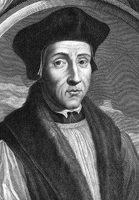


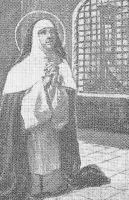
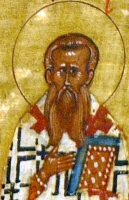


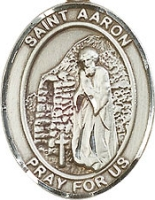

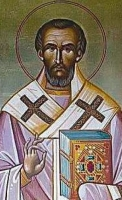

No comments:
Post a Comment